Fifty years and a toolbox separate the new from the old Giulia sedans
By Pete Vack
The master of the universe who will purchase a 2015 510 hp Alfa Giulia Sedan will be missing one important element that past and current owners of classic Giulias often cherish; the intimate relationship an owner develops with his automobile by doing the tuning, maintaining, and repairing oneself. It is doubtful that new Giulia owners will ever have a need to get down and dirty with a spanner or socket wrench in hand, much less do it for fun. Nor will they ever have to carry a box full of tools and spare parts.
Since the 1960s, the decade in which the original Giulia sedan was introduced, fuel injection, electronic and computerized ignition, Japanese imports which effectively made use of W. Edwards Deming’s quality control techniques and the ensuing higher expectations and regulations hugely increased reliability in automotive electronic and mechanical units. At the same time, it became more difficult and often illegal to increase the performance of any post 1967 vehicle.
While this was an absolute boon to very nearly everyone, having a totally reliable and exceedingly complex vehicle left the enthusiast wanting. There was something missing; that inevitable and usually pleasant connection that came with the no-longer-needed repair and maintenance of your sporting daily driver.
It’s in the Owner’s Manual
It wasn’t because the cars we bought were used, or ill-used, that they needed attention. It was because that is the way it was, fifty years ago when one owned an Alfa, new or used, as a daily driver. Witness for example the driver’s manuals, which served extremely well for a full maintenance book, giving in-depth instructions, diagrams and specs for everything short of a low end overhaul. And odds are there was not an Alfa dealer within 100 or 1000 miles of your home, meaning that either you took it to Tony down the road or did it yourself.
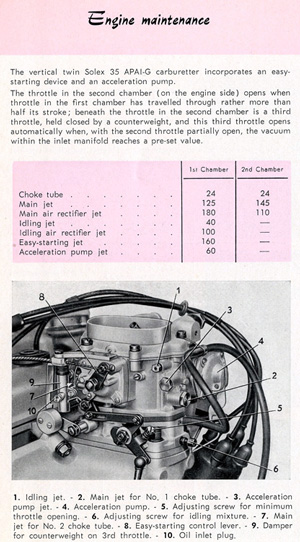 The new Alfa owner often found that working with one’s hands, (not something to be done by many upper income families) was highly gratifying. Fixing something as essential as the daily driver, improving the performance, and saving huge bundles of money by DIY was an important part of owning an automobile like an Alfa. Maintaining and repairing your Alfa requires knowledge, experience, dexterity, the right tools and a lot of patience. The more enthusiastic the owner, the more sporting the car, the more intense was that relationship and the number and complexity of the tasks increased, from gapping the spark plugs to dialing in the cams and changing valve shims to overhauling Weber DCOEs.
The new Alfa owner often found that working with one’s hands, (not something to be done by many upper income families) was highly gratifying. Fixing something as essential as the daily driver, improving the performance, and saving huge bundles of money by DIY was an important part of owning an automobile like an Alfa. Maintaining and repairing your Alfa requires knowledge, experience, dexterity, the right tools and a lot of patience. The more enthusiastic the owner, the more sporting the car, the more intense was that relationship and the number and complexity of the tasks increased, from gapping the spark plugs to dialing in the cams and changing valve shims to overhauling Weber DCOEs.
Plug in any semi exotic foreign make for Alfa, it didn’t really matter; when on the road if a Chevy broke down and they did, anyone might be able to help. But Lord help you if you had an Alfa, Lancia, or Maserati. One simply had to help themselves. It came with the territory, the pride of ownership, stubborn enthusiasm; when one bought an Alfa, new or used, self-maintenance was part of the deal, even if you didn’t know it at the time.
Don’t leave home without it…
The toolbox (the one that fit handily in the trunk) was the symbol of this mystical mechanical understanding between car and driver. For most of us, it has gone the way of Webers and distributors. For the original Alfa Giulia owners, the toolbox was filled with tools and bits and pieces that would keep one from becoming a roadside statistic and an AAA repeat customer. Here’s a sample: electrical tape, a set of points, plugs, distributor cap, rotor, spark plug wire, complete set of metric sockets and spanners, wire, racer’s tape, generator brushes, upper and lower radiator hoses. Jubilee clips, vise grips, screwdrivers, bailing wire, wire cutters, small diameter fuel hose, pliers, hammer, miscellaneous metric nuts and bolts and gaskets, exhaust bondo, tinsnips, water pump, fan belt, gap tool, wire brush.
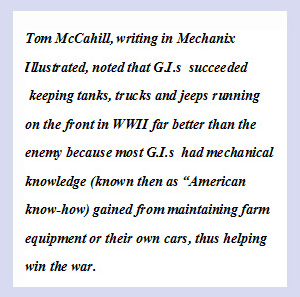
Even before Karl Malden admonished us not to leave home without a credit card, we knew we simply could not travel without a tool box. It was unheard of, yet just a few years later to do the same while driving a Honda would simply be idiotic.
Generation to generation
We wonder why the current generation fails to be interested in cars, which despite the computerization are still very much mechanical vehicles. Since the very dawn of the automobile, most owners had to maintain their own car, and passed this knowledge on to their offspring, teaching them by the way electricity, metalworking, math, physics, and the joy of getting something running again. It will be a rare Millennium who can share that with his/her children.
All in the family
Another example of what might be yesterday’s joys or follies was sharing these experiences with significant others. While taking mother-in-law shopping, my Mini (the real Mini) driving wife lost fuel pressure in the middle of an intersection. She and Mum pushed the Mini into a parking lot, whereupon a large screwdriver was obtained from the very necessary toolbox. Getting under the car, wife gave the Skinner’s Union fuel pump a much deserved whack and it decided to pump again. And off they went laughing all the way. It’s doubtful we’ll ever see those days again.
The Die Hards
Of course our friends who still participate in Vintage races and rallies or enjoy driving their classics on a weekend still can enjoy that special relationship (as do hot rodders, rice rocket enthusiasts, and most motorcyclists). While not always enjoyable, it is part of the trip, part of getting there part of what it means to run a classic event with a classic car. The drivers of the Portello team of Giulias that are now embarking on the Paris to Peking rally will have the experience; and perhaps nowhere is this intimacy more revealing in all of its frustration and glory than in Graham Earl’s three part article on an Alfa in the Mille Miglia. These are part of the magic that no longer exists but for special occasions or really hard core vintage road and racecar drivers.
Of course as Gijsbert-Paul Berk reminds me, this is progress, and Luddites we are not. We are glad that our new car will not need repair or maintenance. Truth be told, working on the daily driver was often a real pain. But it is something we have lost and will never, ever return; it was a great part of the automotive journey that I for one am glad to have experienced.
And that master of the universe? He’ll get a great car, bragging rights, looks (maybe although like many Alfa sedans, the new Giulia is not a stunner). We are not sure how or where he’ll use that 510 hp but that’s his happy problem. But thirty years down the line, or fifty, will our master of the universe still fondly recall that car? Will he have been able to develop that special bond that goes deeper than looks, deeper than the heritage, deeper than a good drive?
Nah, he won’t even have a toolbox to remember it by.
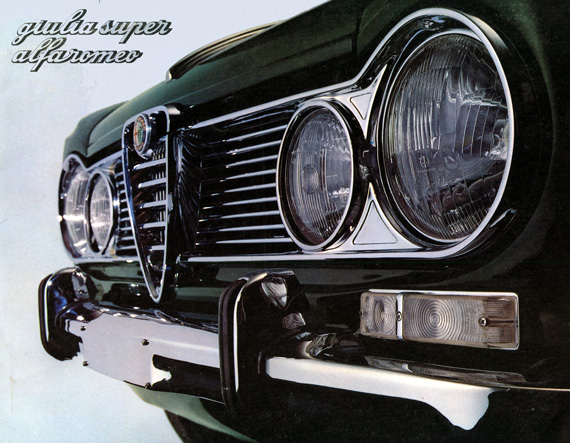
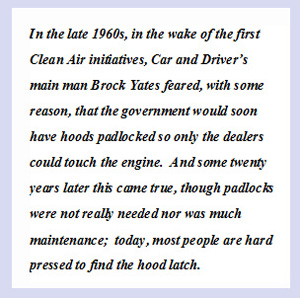
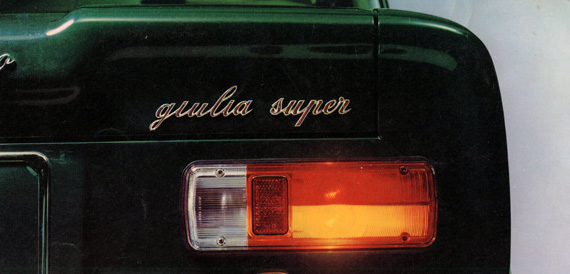
Great article which contains many home truths and brings back fond memories. I learnt to drive in a 1969 Giulia 1300 Ti in then Rhodesia, as a schoolboy. At University I had a 1967 1600 GT Veloce, and 45 some years and 20 odd Alfas later I have a 1971 1750 GTV and a 1973 Giulia Super. I still have the tool box from University days and my checklist for the contents was not far off the list above! My girlfriend/now wife thought I was completely mad (still does, I think….) My newest car is a 2005 156 Sportwagon (great car) and I have to admit that I have my eye on the new Giulia, a rear wheel drive Alfa at last! And, of course, to have the old and new side by side in the garage. What a treat that should be, but I bet the old lady will get the most looks.
Every Alfa Romeo came with a tool kit of some kind. Any Alfa restoration for show should have a tool kit, and they are very hard to find. Going back into the 1950’s there was a box of tools in case you wanted to work on or need to repair while on the road. In the 1960’s, there was a tool roll with some basic tools to do maintenance. Now those tools are in big demand that replica’s are being made, to exact standards as the originals. An original tool roll can fetch $1000+ if its complete. The later 1960’s saw the toll roll go away with just a plastic pouch with a couple tools and a tire wrench. This continued all the way up until the Milano and 164 were brought over. In the trunk was a plastic foam kit with some basics and a couple extra handles for windows and sun roof if the levers broke. There was even a small plastic round orange/green container with bulbs and fuses if you wanted something more from the dealers. Now its all gone. There goes some of the mystique.
thanks fond memories of this quick little sleeper car… Loved it!!!
So true! Just last night my car ‘failed to proceed’; An hour fiddling in the dark with a screwdriver and a bit of cable hot-wired the lights and ignition and we were on our way – cold, wet and frustrated. Now, just twelve hours later, I can look back and laugh, another memory to add to life’s experience!
The Alfa Giulia is so robust and dependable that one could travel without tools or spare parts. I drove my ’73 Super cross country (USA) three times without a single problem – although I was prepared with a good luck charm – a fully stocked tool bag and spare parts.
Fred, yes, they were extremely reliable. We are talking about daily drivers here, so if one traveled across the country, the Alfa was the only car available. We took 3000-6000 mile trips in a GTC, Satta sedan 1300 and 1600, a 1300 Sprint Veloce and a 1300 Spider. With toolbox, of course, which was also a good luck charm. However, the term reliability is relative. What is considered reliable today is something very different than reliability fifty years ago.
Ahhh! the SU fuel pump! My 1954 Singer had one of those, which could almost be counted upon to fail at least a couple of times on a warm day. My next car, an HRG had a main tank and a reserve tank, with separate pumps. The Bendix on the reserve tank always worked. Only the “brits” could tolerate such an unreliable product, as they did for years and years, and years. All during those years, mechanical pumps thwocked away, happily and reliably. – Don